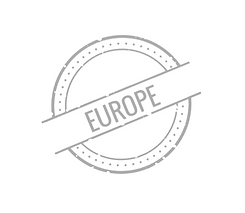


national standard
National standardization institutions \ National standards institutes
in the destination countriesThey are bodies responsible for writing
and distribution devices at the national level
and represent the country in which they operate
In the international and regional standardization institutions.
tip Examples of national standardization institutions:
BSI- in England
DIN- in Germany
AFNOR- in France
ANSI- in the USA
and more...
International standardization
The international standard is working
under the umbrella organization for standardization ISO
(International Standards Organization).
Most countries of the world are members of this organization
including the countries of the European Common Market.
ISO is the super organization of the standard and is linked
With allStandards institutesof the member states.
ISO standards are used as a basis for testing products
As part of your certification process to receive a standard mark
or for other compatibility confirmation.
One of the well-known standardsof the standardization organization
the internationalHe installed ISO 9001-2015
Used as the global standard for system certification
Quality Assurance.
Additional standards:
• Approval of compliance with FDA requirements - compliance of raw materials for contact with food / drinking water according to FDA requirements
• SAA approval for Australia - approval of electrical and electronic products
• approval PSE for Japan - certification of electronic electrical products
• ACS Certification For France - approval for materials or products that come into contact with drinking water
• WRAS certificate For England - approval for materials or products that come into contact with drinking water
• approval CCC for China - approval of taxable products such as:
Electric cables, motors, switches, electric tools, etc.


European standard
European standardization is managed
byEuropean Standards Institute CEN.
All countries of the European Common Market are members of CEN.
CEN standards begin with the letters EN
after which a number will appear.
Nowadays, when a CEN standard comes out,
It is adopted gradually
by all the states of the Union
and replaces the national standards
which preceded him in every country.
This has a great relative advantage compared to the previous situation
In it a manufacturer who wanted to export to one of the European countries
must standin the requirements of the standardof each country separately.
This involved many complications and great expenses.
Tip Today, in most cases,
productwhich meets the requirements of the European standard
and tested in onethe member states of the common market,
will be recognized as having a standard in all other market countries.
We are engaged in adapting the product to the directive requirements of the European market:
Safety Toys, EMC, LVD, RED, RoHS, REACH, Machinery, RED,
Personal protective equipment
Including the preparation of the technical file (Technical file) as required by the directives.
American standard
Similar to Europe, there are bodies in the United States as well
which confirm the compliance of the product with the requirements of the standards.
Emphasize that the product conforms to the US standard
It is more commercial than statutory.
In practice the American marketers will demand
or would absolutely prefer
A certified productOver a product without a standard.
tip Below is a brief overview of main laboratories
Testing and certifying products in the USA:


Laboratories NSF Checks and confirms:
•Accessories for water supply and treatment systems
• Water treatment systems and materials
• Sanitation accessories
•Plastic piping
•Packaging for food and water
Food supplements
•Protective materials (paints and coatings)
and more...
Laboratories UL Checks and confirms:
•Electrical products and components and electronic
•Products for fire extinguishing systems
•Construction materials




